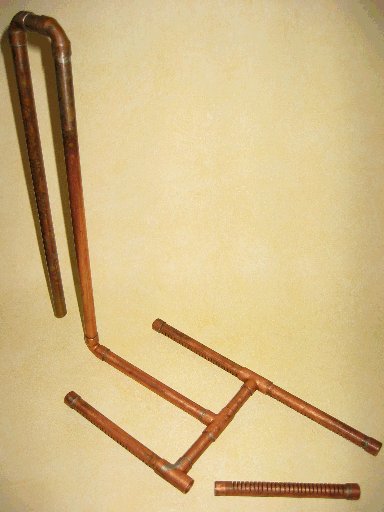Since I've been using my new boiler, I've been doing no sparge. To avoid losing volume though, I've been using my software (Beersmith 3) to adjust the quantity of grain and hops, and topping up before the boil, and also into the fermenter. Usually works out roughly that I add 6 litres before I boil, and another 3 to the FV. Thanks to the software doing the calculations, my IBUs and OG have been bang on target, as has my volume into FV for both brews with my new boiler. This is probably mostly thanks to guessing correctly that my brew house efficiency would be at around the 70% mark too though, it's meant that my equipment was "dialled in" from the off... I'm using slightly more grain, but it's less work and mess, and I'm hitting targets bang on. So much less work that I usually have the energy to completely clean up after my brew day.
My old boiler, because I had my 33 litre (although realistically that's to the brim, and not allowing for displacement by things like bazooka filters etc..) pan (which is now my boiler after been converted) I used to do a sparge, heating my sparge water in the pan, draining my boiler after mashing and then doing a sort of hybrid fly sparge then dunk sort of thing, and got my boil volume that way. I got a higher brew house efficiency doing this, used less grain, and overshot my target OG every single time pretty much. BUT it was more work and more mess... So much more mess, that often I'd have to finish cleaning up my boiler etc the next day as I was too tired and achy to do it on the same day....
Swings and roundabouts.





